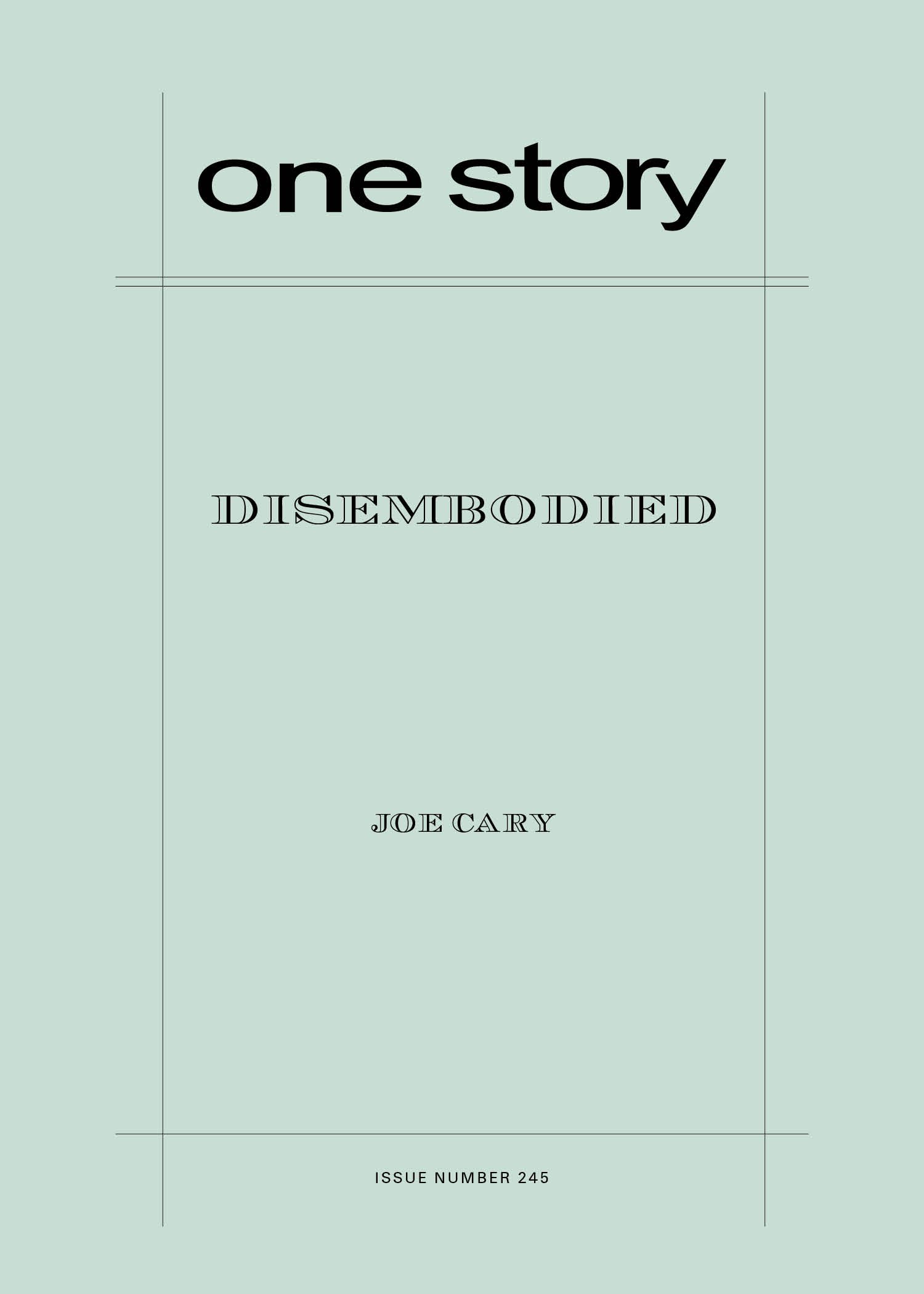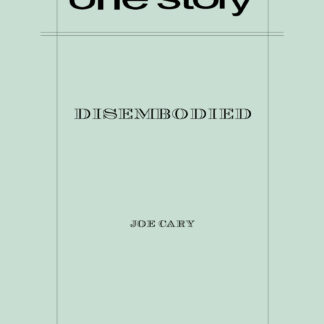
Disembodied
45 in stock
Excerpt
Twenty-four dollars and thirty cents in wet coins—freshly plundered from the Bryant Park fountain—jiggled in my pockets. Pants rolled to my knees, shoes untied, I jogged west on Forty-Second Street toward the Third Rock Deli-Mart in Times Square, darting between bus lane and sidewalk to weave through the summer hordes. For the first time ever, park security had run me off from a fountain, though in truth I outran them with just a brisk walk. It was skunk management, after all: they didn’t want to catch me; they wanted to get rid of me.
My instincts were telling me to buy a scratch-off ticket. I wasn’t naïve, or blinded by the potential payoff. And I knew that my odds of winning, eight million to one, were the same odds I had of flipping twenty-three heads in a row; three years earlier, I’d graduated with a double major in math and cosmology. But here’s the thing: today I had two beauties in my pocket—Sacagawea and Susan B. Anthony—and I’d never before scored both in the same month let alone same day, same fountain. As my brother Josh used to say, when you’re born homeless, hope and long odds are next-door neighbors, just not next door to you. So whenever long-shot coincidences collided, my gut screamed damn the odds, the universe is telling you to take a chance.
Joe Cary
Joe Cary lives in West Chester, Pennsylvania with his wife and daughter. He has a B.A. in Economics and is an investment consultant and adult literacy tutor. He earned the coveted two-star sticker honor for his seminal fifth-grade paper “Why Barry Sanders is So Much Better Than Your Favorite Running Back.”
Patrick Ryan on “Disembodied”
Our new issue, “Disembodied” by Joe Cary, is about family, legacy, kindness, generosity, and the possibility of magic. It’s also about fear, rotten luck, and flat-out destitution. For all its admirable qualities—and there are many—it’s the voice of this story that brought me to my knees. The unnamed narrator is a second-generation homeless man living on the streets of New York City. His only agenda is a simple one: get through today so that he can get through tomorrow. He expects to be met with difficulties. He expects to encounter judgmental looks from strangers, suspicious glances from cops, hunger pains, challenges when it comes to looking for a place to sleep or even a safe spot to sit down and have a thought. He lives in a world so consistent in its daily unwelcoming of his presence that it’s almost become a dependable place. And then something unexpected begins to happen—something that defies even his college-educated, street-smart mind. Hats off to the author, Joe Cary, who says in our Q&A that while drafting “Disembodied” he read the story aloud so many times (in order to get the voice right) that he “can nearly recite it.” That hard work has paid off, and we’re the lucky readers who get to reap the benefits.
Q&A by Patrick Ryan
- PR: Where did the idea for this story come from?
- JC: I worked in Manhattan for a time and often ate lunch outside at Bryant Park. One day I saw someone plunder the fountain there, and I was struck with a profound ambivalence. I’m hesitant to expand on the ambivalence because it could be a spoiler, but it wouldn’t leave me alone, for months I couldn’t stop thinking about it, or tinkering with it. That’s where most of my story ideas come from, an experience that clings.
- PR: How long did it take you to complete this story?
- JC: It stewed in my mind for maybe a year and a half before I put pen to paper. Much of the plot and many of the lines were built in my head on subway and bus rides and walks to and from work. I sometimes took notes on my phone: a good line, a vivid sensory detail. Then from the first draft to final polishing of the layout spanned two years and eight months, which included other projects and over six months of drawer time: no edits, no reads, just distance. Getting distance from a story is key for me.
- PR: One of the many things I admire about “Disembodied” is that it walks a fine line between conveying what the narrator understands to be a kind of magic and making the claim that the magic is actually real. But that could just be my reading of the story. To your thinking, is the magic real? Or would you rather not weigh in?
- JC: I’d rather not weigh in directly, because your reading of the story was my intention. I’d hoped to create a world that invited the reader to decide that question for themselves. This story is, in part, about purpose, and I think that’s how it goes when it comes to purpose: whether we believe we earned it, see it as a gift, or feel it was foisted on us, we decide what to listen to or tell ourselves along the way in support of it.
- PR: What was the biggest surprise you encountered while writing “Disembodied”?
- JC: The research. I took a deep dive researching homelessness, in the back of my mind always hearing Larry Brown’s guidance about telling it straight and avoiding the opposing ditches of sentimentality and hard-heartedness. That research, and the understanding it brought, was difficult, heartrending. I came to realize that many of us are like many of those I read about: one bad decision or, worse yet, one bout of bad luck away from being destitute. I also dove deep into cosmology, which was surprising in a wholly different, “Wait...what?” kind of way.
- PR: It’s hard for me to imagine “Disembodied” in any point-of-view other than the first person. The story is voice-driven, to say the least. Did you have to work especially hard on the narrative voice? Did you read the paragraphs aloud to yourself as you drafted and revised?
- JC: The plot came first and I had to wait for the voice. Even in later stages, when adding a scene or zooming in, I often had to pencil in a scaffolding and wait for the voice to fill in the rest. I spent a lot of time on that, and some of my favorite lines or parts came to me while I was distracted doing something else (those subconscious whispers feel serendipitous). The POV was always first person but it began as a present tense story. Changing to the past tense gave the story a chance to breathe and gain more perspective from hindsight, which I think enhanced the voice. And yes, I’ve read this story aloud so many times I can nearly recite it. That was vital to getting the voice right.
- PR: Finish this sentence in just one word—the word you think best captures it: “This story is about __________.”?
- JC: Purpose.
- PR: What are you working on now?
- JC: A job search. And a few writing projects. I try to write across styles and genre and voice, even if it stinks, in the hope it enhances my craft. So, a flash fiction, a darker speculative story, a satire about the marketing of shame, and a thriller that needs one more good beating before I put it out there.
- PR: What is the best bit of advice about writing you have ever received?
- JC: It’s very hard for me to rank that. But I’ll offer two if you’ll allow. First, from John Gardner’s The Art of Fiction: Notes on Craft for Young Writers, the first craft book I read. It was over my head the first time, but one thing stuck with me—his mantra that a good story is a fictive dream for the reader and how to make it so—make it Vivid, Continuous, Concerned and Fulfilled. His novella Grendel is a master class in putting that advice into action. Second, I’ve long liked Hemingway’s line that “The first draft of anything is shit.” In part because it’s heartening to have something in common with Hemingway, but more seriously because it’s liberating to hear that from a master. I take it to mean: writing is indeed re-writing, so just write, turn off your censor and go where that first draft takes you; ride the bull. And if you connect that quote with Hemingway’s answer (in The Paris Review’s The Art of Fiction No. 21) to the question of what made him revise the ending of A Farewell to Arms thirty-nine times—“getting the words right”—then it seems to me he’s given us a rough map of how to get from shit to publishable.
